Heroic architecture
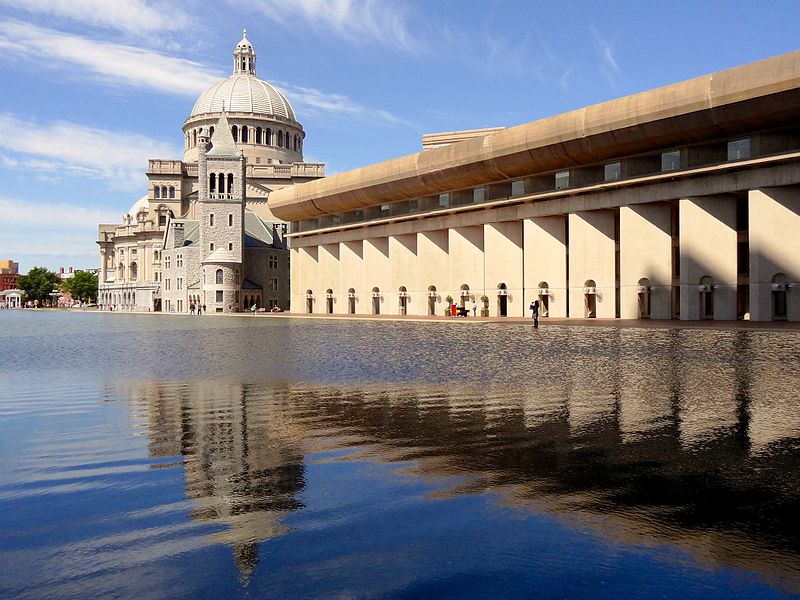
|
| First Church of Christ Scientist, Boston, Massachusetts. The Colonnade Building and Reflection Pool (1973) in the foreground were designed by Araldo Cossutta while working for I M Pei's firm. |
Contents |
[edit] Brutalism
Brutalism, also known as Brutalist architecture, is a style that emerged in the 1950s and grew out of the early-20th century modernist movement. Brutalist buildings are characterised by their massive, monolithic and ‘blocky’ appearance with a rigid geometric style and large-scale use of poured concrete.
The term ‘Brutalism’ was coined by the British architects Alison and Peter Smithson, and popularised by the architectural historian Reyner Banham in 1954. It derives from ‘Béton brut’ (raw concrete) and was first associated in architecture with Le Corbusier, who designed the Carpenter Center at Harvard University in the early 1960s.
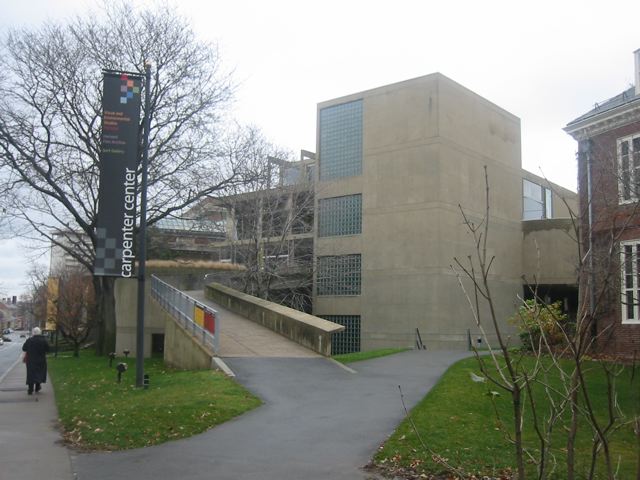
|
| Built in 1963, the Carpenter Center at Harvard University is Le Corbusier’s only building in North America. |
Brutalism became a popular style throughout the 1960s as the austerity of the 1950s gave way to dynamism and self-confidence. It was commonly used for government projects, universities, car parks, leisure and shopping centres and high-rise blocks of flats.
Brutalism was associated with the socially progressive housing solutions that architects and town planners promoted as modern ‘streets in the sky’. With an ethos of ‘social utopianism’, together with the influence of constructivist architecture, it became increasingly widespread across European communist countries such as the Soviet Union, Bulgaria, Yugoslavia, and Czechoslovakia. It also experienced popularity in America.
[edit] From Brutal to Heroic
Over the years, the Brutalist movement experienced waves of popularity and rejection around the world. The movement began to decline in the 1970s, having been widely criticised for being unwelcoming and inhumane.
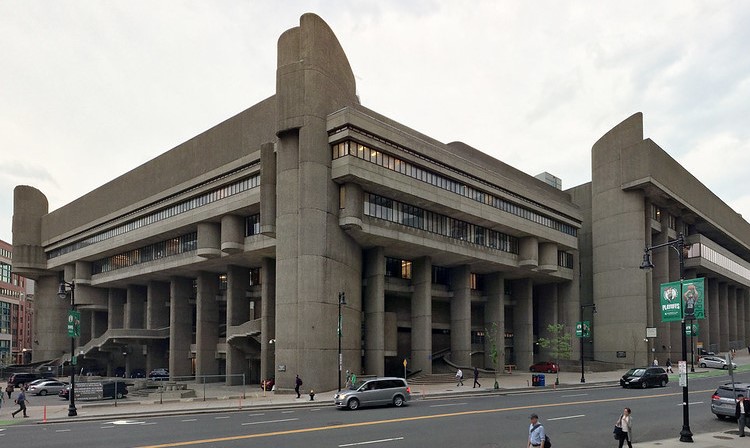
|
| Paul Rudolph's Government Service Center in Boston incorporates the Charles F Hurley Building and Erich Lindemann Mental Health Center. While design began in 1963, the building did not open until 1971 - at which point, cost overruns and other issues forced the opening when the building was not yet entirely complete. |
Then in 2006 it underwent a rebranding campaign in America. A group of Boston architects came up with a new name, ‘Heroic architecture’, to define Brutalism in a fresh context in an attempt to revive the movement.
Mark Pasnik, Michael Kubo and Chris Grimley introduced the Heroic Project as part of their effort to preserve and defend Brutalist buildings in Boston and around the world. Meant to remove the negative connotations associated both with the word ‘Brutalism’ and its stylistic shortcomings, their ‘Heroic’ rebranding sought to elevate the style whilst highlighting its inherent structural benefits.
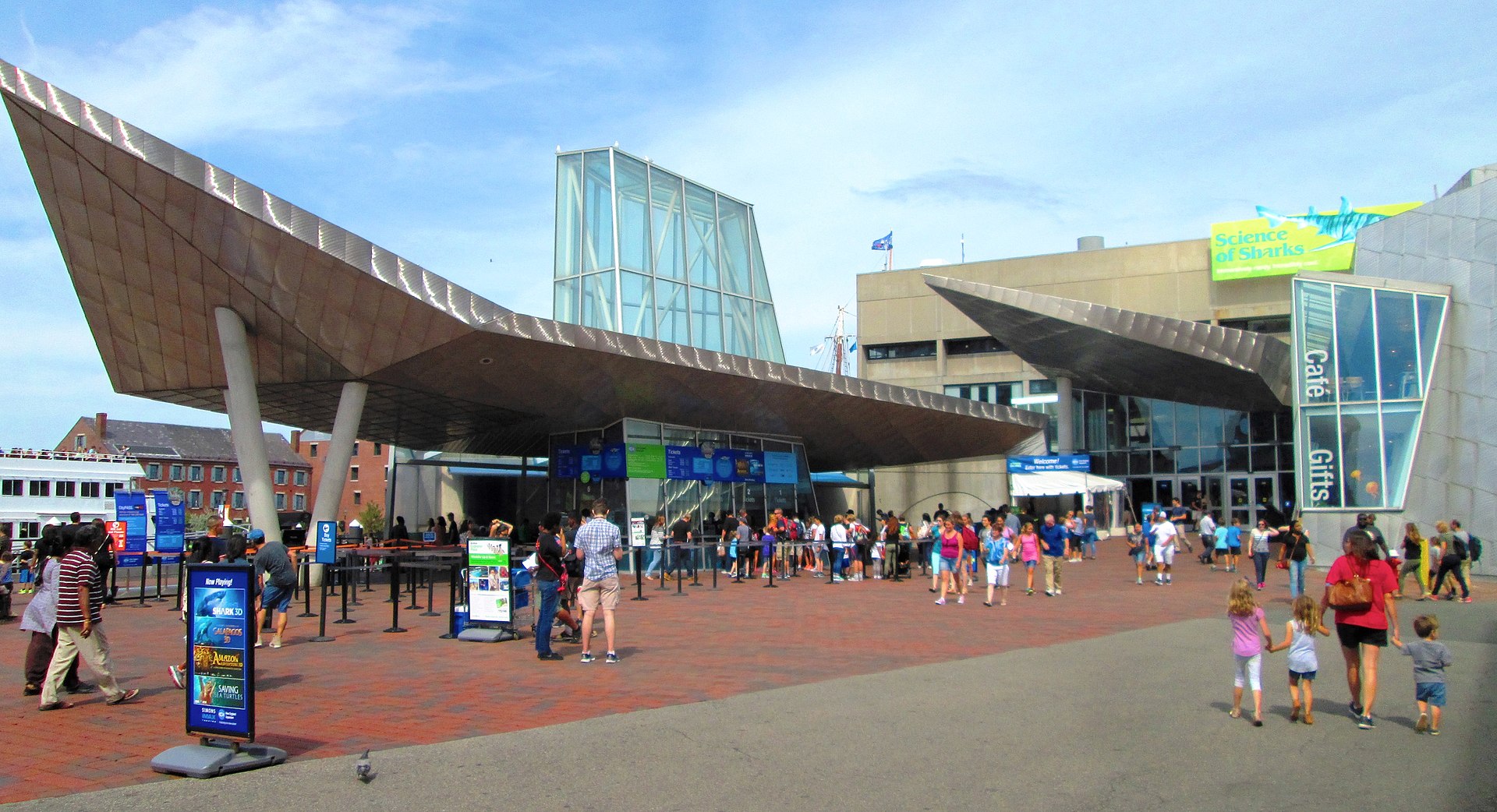
|
| The New England Aquarium main building was designed by Peter Chermayeff of Cambridge Seven Associates and opened to the public in 1969. |
In the article, Brutal/Heroic, Mark Pasnik, Michael Kubo, Chris Grimley wrote: "Like Brutalism, Heroic carries both positive and negative connotations. It underscores the ambition, but also perhaps the hubris that marked the architectural production of the time. While Brutalism has become nearly impossible to dissociate from its negative connotations, Heroic acknowledges the complexities of these buildings—both the intentions from which they grew and their controversial status afterward. We feel the need to reject the accumulated cultural baggage of Brutalism and redirect public discourse about the future of these buildings within a wider historical perspective. Calling them Heroic reframes a more balanced discussion about their legacy and value for us today.”
Although there are “hubris issues” associated with the term Heroic, these can be rationalised, according to Pasnik, Kubo and Grimley, by the sense that it generally projects a positive solution to a problem. This is seen as a sharp contrast to Brutalism, which is essentially negative in almost every context - and out of step with the optimistic idealism of American economic growth.
[edit] Concrete communities
In cities and suburban centres across America, there is still a love-hate relationship with Brutalism. Characterised by its unfinished surfaces, unusual shapes, heavy-looking materials, straight lines and small windows, this style of architecture in America often features concrete, brick, glass, steel, and roughly hewn stone.
Boston, Massachusetts has a high concentration of 'Heroic' structures built during the city’s economic revival in the 1960s. Serving as government, academic and arts related facilities, these buildings represented “New Boston” and served to showcase techniques that allowed architects and engineers to test the boundaries of concrete’s properties.
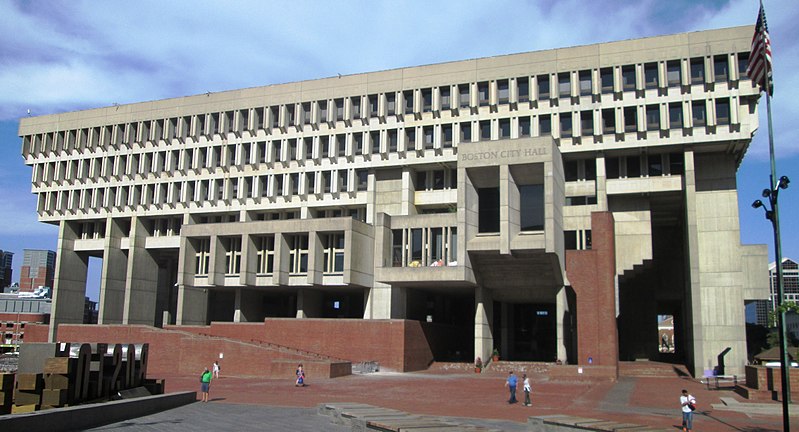
|
| Referred to by some local tour guides as the ugliest building in the city, Boston City Hall opened in 1969. It was designed by the architecture firms of Kallmann McKinnell & Knowles with Campbell, Aldrich & Nulty. Engineering support was provided by LeMessurier Associates, the same firm that worked on the Citigroup Center in Manhattan. |
Some of the architects and engineers working in Boston during the 1960s avoided labeling their concrete structures as Brutalist, although none came up with a phrase to replace it. Other terms, such as ‘concrete modernism’ or ‘New Monumentality’, were used instead.
These terms implied power and innovation without the negative implications of Brutalism; however, none of them really gained traction. They alluded to the heavy and dramatic characteristics of the monumental buildings they were meant to describe.
The Boston trio behind Heroic Architecture introduced the new label with the hopes it would capture the inspiration that these buildings and others of the style attempted to project.
[edit] The Heroic Project
The work of Pasnik, Kubo and Grimley is explored in the book, Heroic: Concrete Architecture and the New Boston, published by Monacelli Press.
[edit] Related articles on Designing Building Wiki
- American modernism.
- Architectural styles.
- Brutalism.
- Chinese brutalism.
- Citigroup Center.
- Concrete.
- Italian brutalism.
- Le Corbusier (Architect).
- Top 10 most expensive construction projects in the world.
[edit] External resources
- Mark Pasnik, Michael Kubo, Chris Grimley, Brutal/Heroic.
- Mark Pasnik, Michael Kubo and Chris Grimley, Heroic: Concrete Architecture and the New Boston.
Featured articles and news
RTPI leader to become new CIOB Chief Executive Officer
Dr Victoria Hills MRTPI, FICE to take over after Caroline Gumble’s departure.
Social and affordable housing, a long term plan for delivery
The “Delivering a Decade of Renewal for Social and Affordable Housing” strategy sets out future path.
A change to adoptive architecture
Effects of global weather warming on architectural detailing, material choice and human interaction.
The proposed publicly owned and backed subsidiary of Homes England, to facilitate new homes.
How big is the problem and what can we do to mitigate the effects?
Overheating guidance and tools for building designers
A number of cool guides to help with the heat.
The UK's Modern Industrial Strategy: A 10 year plan
Previous consultation criticism, current key elements and general support with some persisting reservations.
Building Safety Regulator reforms
New roles, new staff and a new fast track service pave the way for a single construction regulator.
Architectural Technologist CPDs and Communications
CIAT CPD… and how you can do it!
Cooling centres and cool spaces
Managing extreme heat in cities by directing the public to places for heat stress relief and water sources.
Winter gardens: A brief history and warm variations
Extending the season with glass in different forms and terms.
Restoring Great Yarmouth's Winter Gardens
Transforming one of the least sustainable constructions imaginable.
Construction Skills Mission Board launch sector drive
Newly formed government and industry collaboration set strategy for recruiting an additional 100,000 construction workers a year.
New Architects Code comes into effect in September 2025
ARB Architects Code of Conduct and Practice available with ongoing consultation regarding guidance.
Welsh Skills Body (Medr) launches ambitious plan
The new skills body brings together funding and regulation of tertiary education and research for the devolved nation.
Paul Gandy FCIOB announced as next CIOB President
Former Tilbury Douglas CEO takes helm.
UK Infrastructure: A 10 Year Strategy. In brief with reactions
With the National Infrastructure and Service Transformation Authority (NISTA).






















